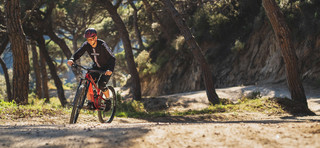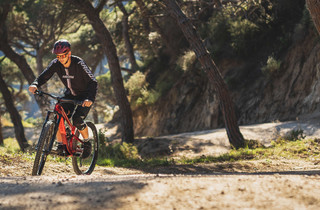FAQ
My disc brake is sliding. What can I do against it?
If your disc brake rotor slides rhythmically although the wheel is fixed in the middle of the axis-support, very often a runout into the rotor is the reason for this. In most cases, this can be corrected with with one simlpe touch. Look into the brake calliper from behind, turn the wheel and watch the disc rotor.
If the disc rotor got a bash, it only touches the brake pad at one certain point. This is clearly audible and visible. Memorize the spot with the bash, turn the wheel so that the spot with the bash is accessible and then straighten the disc-rotor carefully with 2 fingers. This may take several attempts, but in most cases, you will be successful. If you cannot repair the bash yourself, the disc rotor needs to be exchanged. By the way, the warranty claim of new bicycles stays untouched by this procedure.If the disc rotor slides on the ground all the time, the brake calliper needs a trueing. To do that, loosen the two fixing-bolts that fix the brake calliper onto the adapter (see picture). The brake calliper has a long hole, so it can be switched from right to left if the fixing bolts are unfastened. Now you can true the brake calliper and re-tighten the screws. Briefly: unfasten the fixing bolts, pull the brake lever so that the brakes may true themselves automatically, re-tighten the fixing-bolts while pulling the brake lever - that's it. Works almost always.
If one of the pistons seizes so that it does not return after braking, you can try the following: Remove the brake pads, sprinkle the corresponding piston at the side with the necessary brake fluid, depending on the system (Dot4/5.1 or mineral oil, depending on the manufacturer) and then push back the piston gently and try again. If this does not help, the brake needs to be sent to us for a repair.




